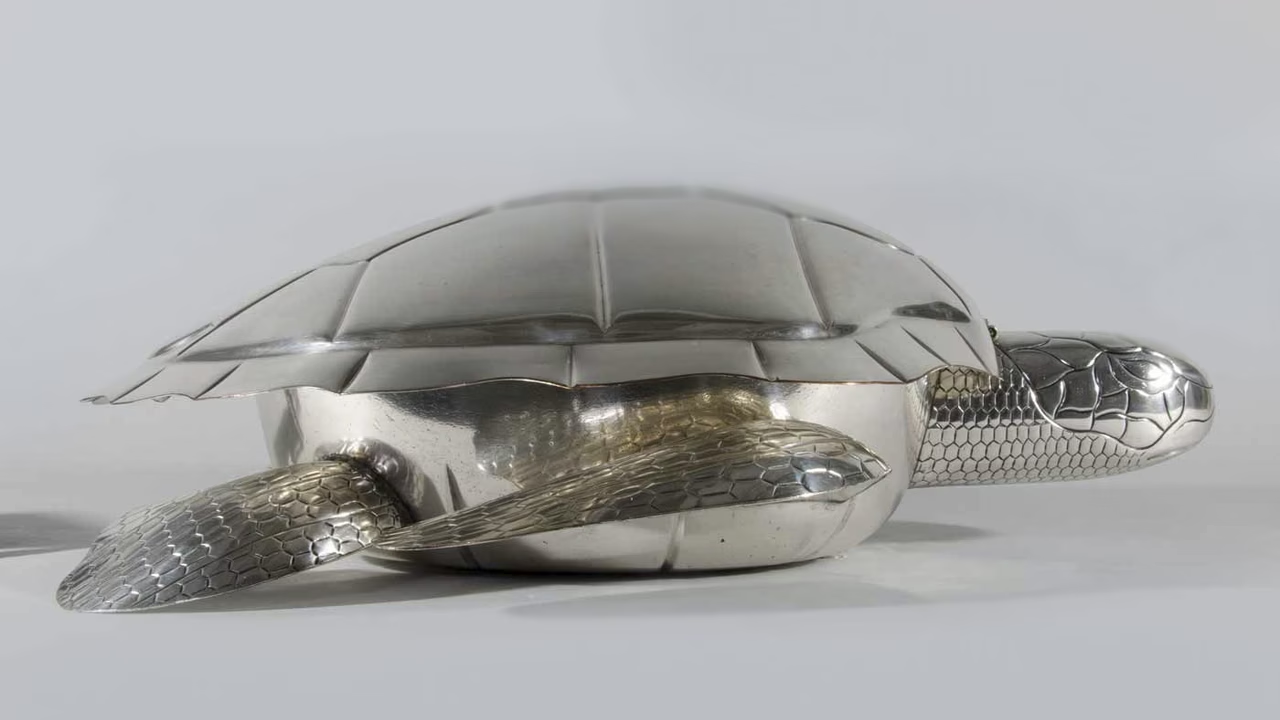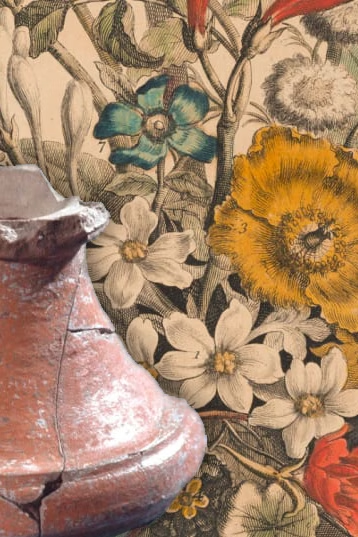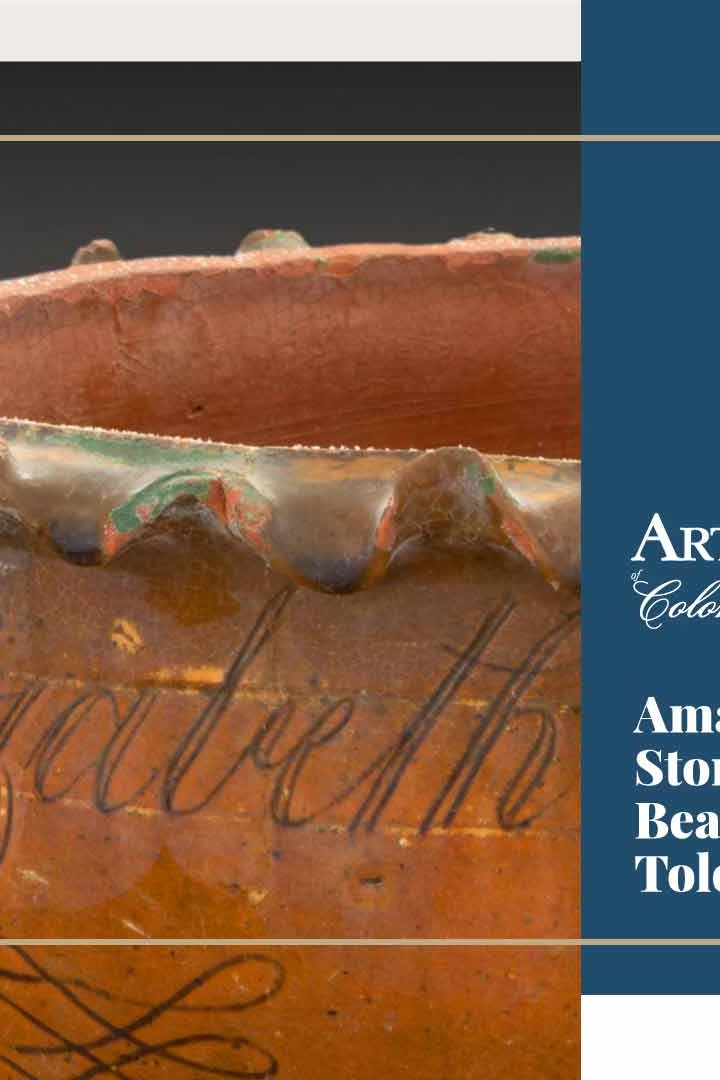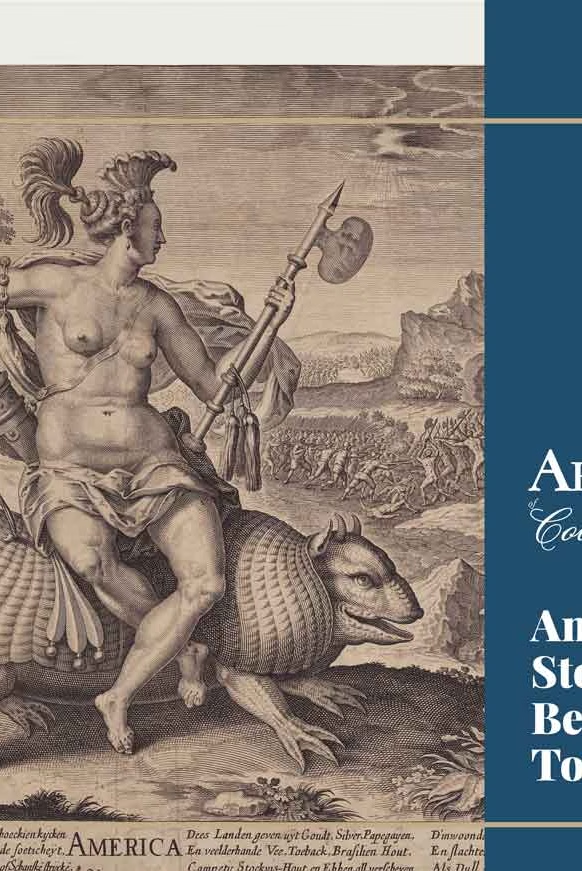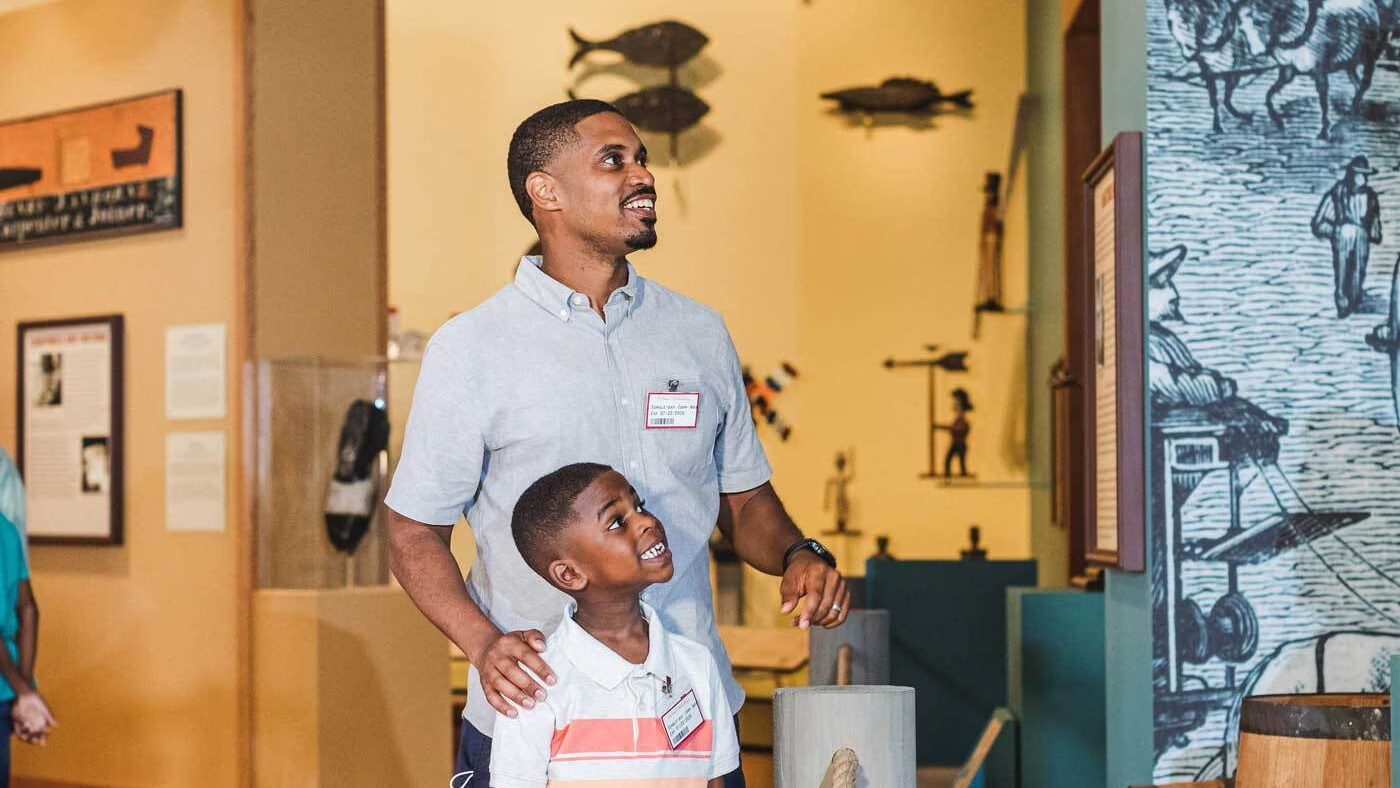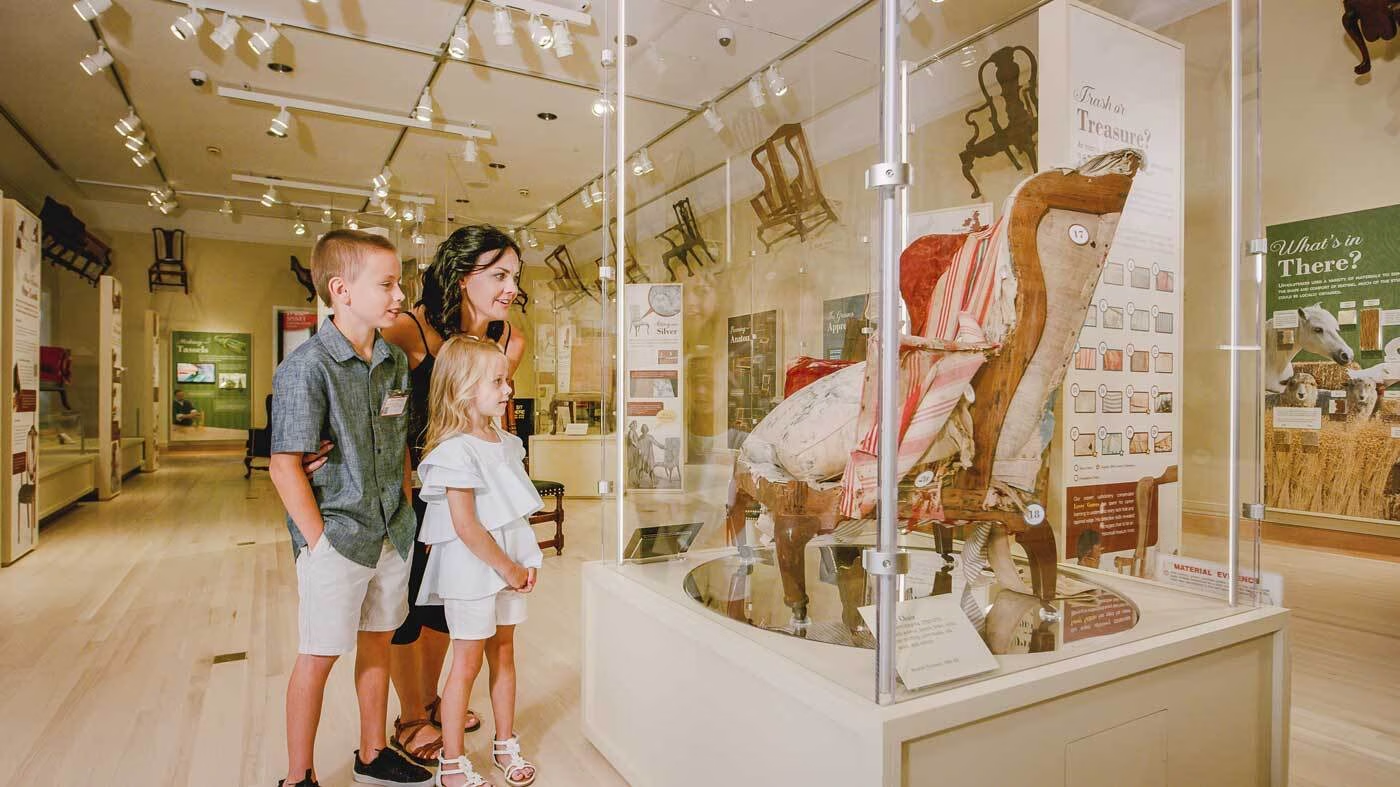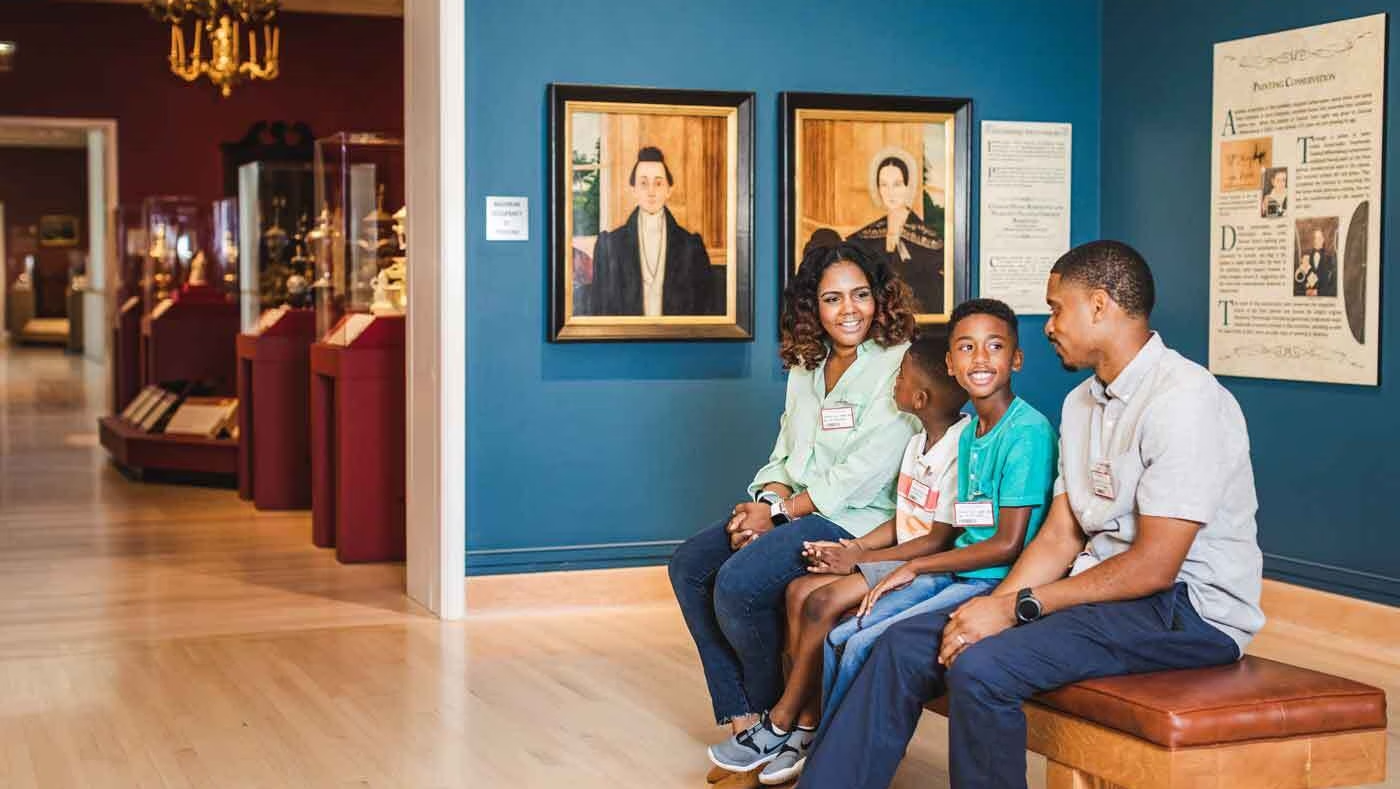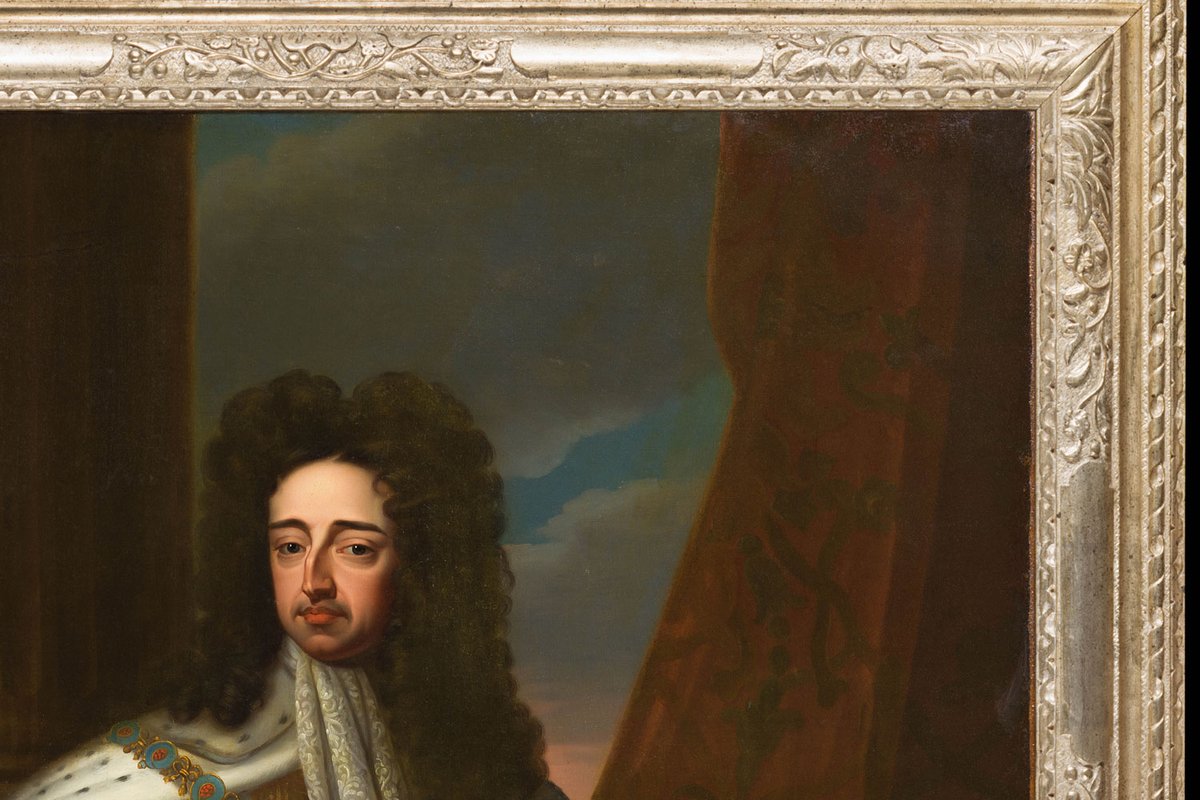
Of Silvering, Making a Frame for King William III
Every object has a story. The Art Museums of Colonial Williamsburg tell the stories of a breathtaking range of folk and decorative art. Let's explore this portrait from our collections. Like this kind of stuff? We've got tons of it.
What is it?
At the start of the COVID-19 pandemic, conservators in Colonial Williamsburg’s Wooden Artifacts Conservation Lab undertook framing of the newly acquired ca. 1695 portrait of British King William III (1650-1702, reigned 1689-1702), attributed to the leading English portrait painter of that day, Sir Godfrey Kneller (1646-1723). This was no small task considering the ornate late-Baroque styling of the time and the large scale of the full-height portrait, which measures nearly nine feet high and six feet wide.
The Project
Producing a reproduction frame appropriate for the late 17th-century royal portrait involved the wooden artifact conservators’ wide range of skills. To design and create the fashionable Baroque frame, they reviewed design sources, studied construction techniques and collections objects, analyzed materials, interacted with the public, and made a silvered frame for King William appropriate for the time period. A stout frame was required to provide support and protect the vulnerable, large, and heavy canvas. The frame’s period-appropriate design also established the art historical context, further reinforcing the bridge between the old and modern world in which we experience the artwork. The work was shared among team members including two conservation graduate-level interns who sharpened their skills as carvers, and those who tackled the rare art of ‘silvering’ in the Baroque style.
Design and Construction
To select the design, the conservators studied many examples of royal portrait frames. A smaller but stylistically related frame in Colonial Williamsburg’s collection became the model for the new design. It is an early 18th-century frame with a history of use at the ca. 1774 Blandfield Plantation, where the earlier home of Robert Beverley (ca. 1673-1722) and later William Beverley (1696-1756) once stood in Essex County, Virginia.
Analysis of the “Blandfield” frame revealed that it retained all its original materials and no apparent restorations had been made, providing the essential evidence of the artistic production methods used at the end of the 17th century. Further examination of the frame by light microscopy, scanning electron microscopy, and FTIR spectroscopy established that it was molded and hand-carved in England, prepared with gesso and white burnishing clay called “bole,” silvered with highlights burnished in the high fashion of the day, and finally coated with a protective traditional clear Sandarac spirit varnish. This frame is part of an extremely small set of known unrestored silvered wooden objects made in the late 17th and early 18th centuries and originally owned in Colonial America (Figure 1).
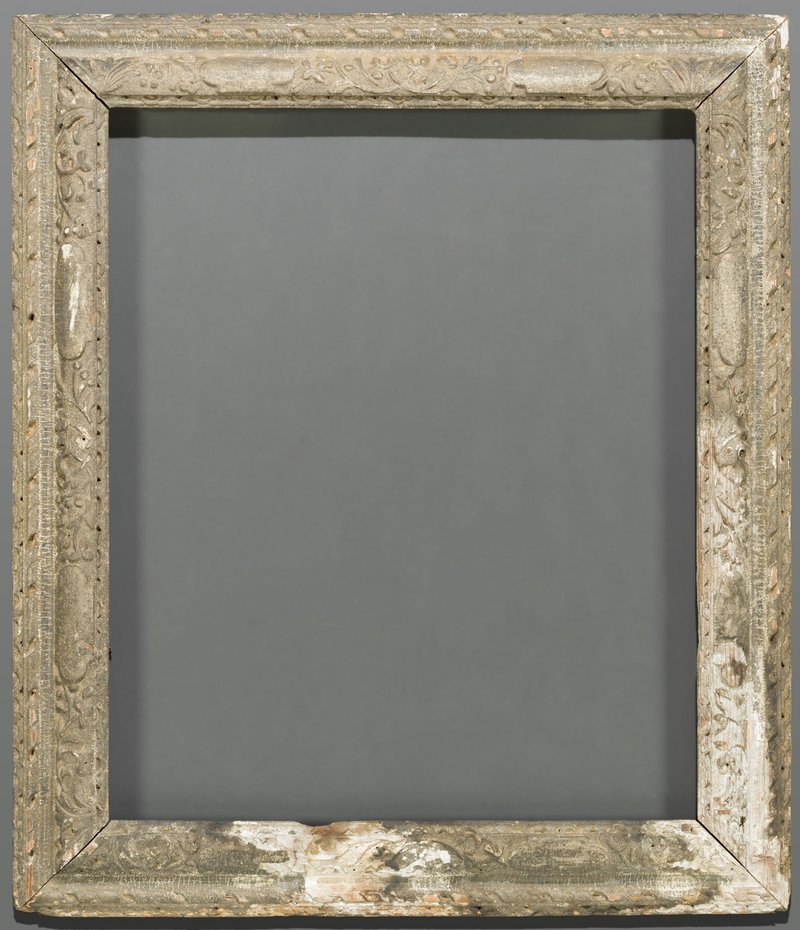
Fig. 1. The unrestored 18th-century “Blandfield” frame.
The team selected the “Blandfield” frame design as the model for the King William III frame. Conservators enlarged the design to scale for the full-length portrait, made a prototype frame corner, and silvered it for curatorial approval. Next, conservation interns and conservators molded the profile in white pine and carved the designs in the frame surface. They then applied the traditional gesso, consisting of whiting (calcium carbonate chalk) and rabbet-skin glue solution, followed by white burnishing clay made of Kaolin. The surfaces were then re-cut to refine carving details in the French manner.
Silvering in the Gallery
The public phase of the project featured conservators, volunteer technicians, and conservation interns recutting the gesso and silvering and burnishing the moldings in the Art Museums gallery in front of an enthusiastic audience. (Figure 2.) Approximately 2,300 museum visitors and staff visited the silvering project in the Art Museums gallery over the course of 3 months. Laying and burnishing bright silver leaf on the frame was an unusual activity that guaranteed popular interest and became the hook for conversations on art conservation and the need for both preventive and interventive care of the collection. The activity also spurred discussions for ongoing research of the Foundation’s study collections that are largely unseen but required to support such reproductions and interpretation in general. The Foundation’s talented Innovation Studios media team recorded the project for future virtual presentations.
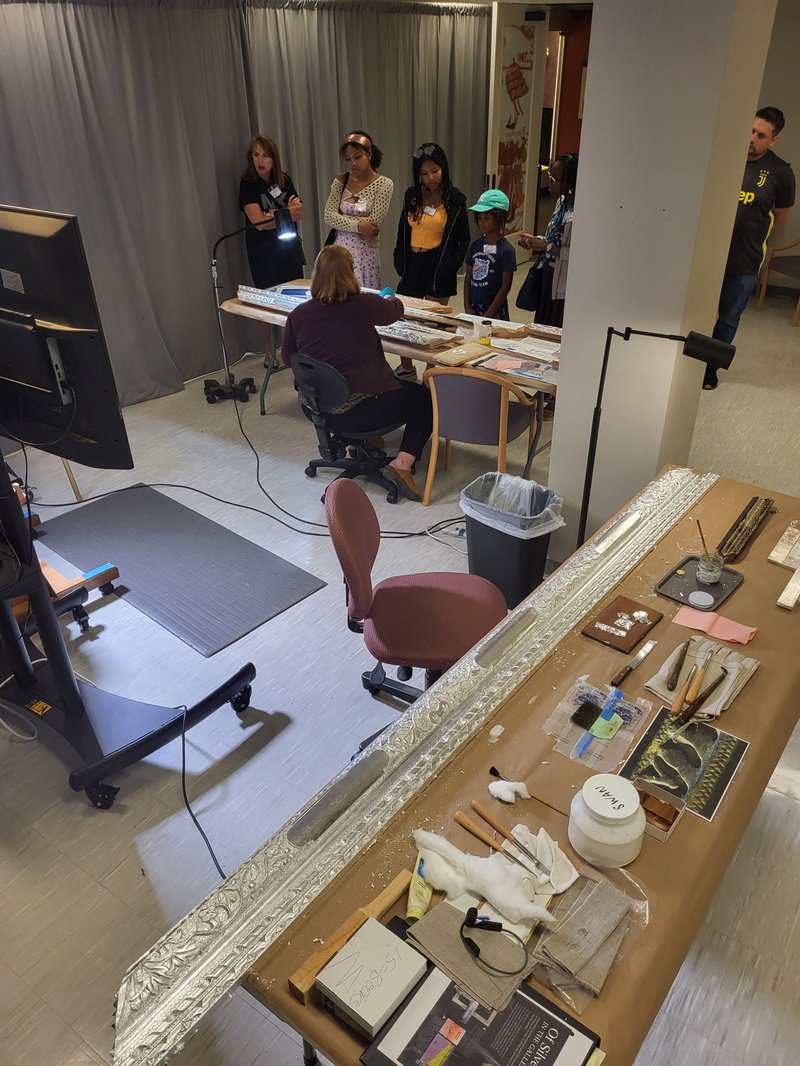
Fig. 2. Assistant Conservator Sarah Towers demonstrates silvering of the frame in the Art Museums gallery.
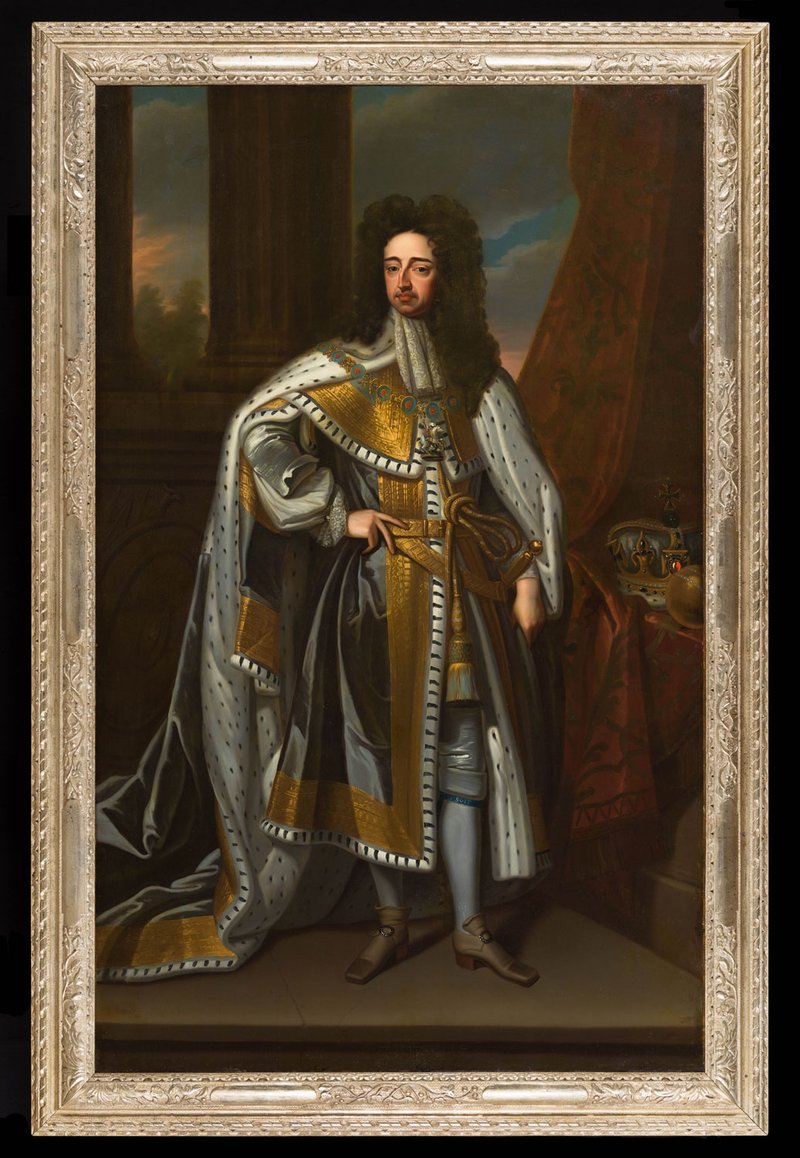
Figure 3. Portrait of King William III in its new reproduction silvered frame.
See for Yourself
You can find this portrait and tens of thousands of objects in our Online Collections. We also invite you to see this remarkable object in person at the Art Museums of Colonial Williamsburg and discover more amazing stories, beautifully told.
Art Museums of Colonial Williamsburg
Explore museum experiences, collections, exhibitions, virtual experiences, conservation, and more.
